Which year did I visit Liangzhu in Hangzhou, Qiandao Lake to see the autumn scenery? Hangzhou Liangzhu, Qiandao Lake Self driving Tour Practical Guide; Winter Tour Practical Guide to Jiangsu, Zhejiang, and Anhui
I am in Liangzhu, Hangzhou, watching the autumn scenery at Qiandao Lake. Hangzhou Liangzhu, Qiandao Lake Self driving Tour Practical Guide; Winter Tour Practical Guide to Jiangsu, Zhejiang, and Anhui 【 December 1, 2020 】 【 Hangzhou Liangzhu, Qiandao Lake, Museum Chapter 】

I spent three days exploring the Liangzhu National Archaeological Site Park in Hangzhou, Zhejiang Province, including Chun'an Qiandao Lake, Fuchun River, Chinese Fan Museum, Chinese Umbrella Museum, Chinese Knife and Sword Museum, Hangzhou Arts and Crafts Museum, Chinese Tea Museum, Beijing Hangzhou Grand Canal Museum, Zhejiang Museum, and Hangzhou Botanical Garden

preface;
Hangzhou City, Zhejiang Province:
Hangzhou, the capital of Zhejiang Province, is located on the southeast coast of China, downstream of the Qiantang River, and at the southern end of the Beijing Hangzhou Grand Canal. Hangzhou has a history of more than 2200 years since its establishment as a county seat in the Qin Dynasty. It was once the capital of the Wu Yue Kingdom and the Southern Song Dynasty, and is one of the eight ancient capitals of China.

There has been a saying since ancient times: "Heaven above, Suzhou and Hangzhou below.". "Hangzhou" refers to Hangzhou, which is known as a "paradise on earth" due to its beautiful scenery.

Hangzhou has numerous cultural relics, including a large number of natural and cultural landscape relics around West Lake. Among them, the main representative unique cultures include West Lake culture, Liangzhu culture, Silk culture, Tea culture, as well as many stories and legends that have been passed down, becoming representatives of Hangzhou culture.

Memory: For Qingdao people from the seaside, perhaps they have watched the beauty of the sea for too long. The attraction of the sea is no longer as strong, and I always yearn for the scenery of various places in Hangzhou. I yearn for the long history and beautiful scenery of Hangzhou, the unforgettable Hangzhou cuisine that constantly moves and attracts me. The wonderful imagination that transcends time and space forces me to embark on this mysterious journey.

Overview of itinerary;
Time: 3 days from December 16th to December 18th, 2020
Characters; Couple 2
Method: Self guided tour
vehicle; Self driving car
Cost: 400 yuan per person (including all expenses such as gasoline, highway, accommodation, tickets, etc.)

That year, the route arrangement for self driving trips to Jiangsu, Zhejiang, and Anhui; Starting from Qingdao -- Gaoyou City, Jiangsu Province -- Jiangyin City, Jiangsu Province -- Huzhou City, Zhejiang Province -- Hangzhou City, Zhejiang Province -- Jiangshan City, Zhejiang Province -- Quzhou City, Zhejiang Province -- Mount Huangshan City, Anhui Province -- Yi County, Anhui Province -- Xuancheng City, Anhui Province -- Nanjing City, Jiangsu Province -- Yangzhou City, Jiangsu Province
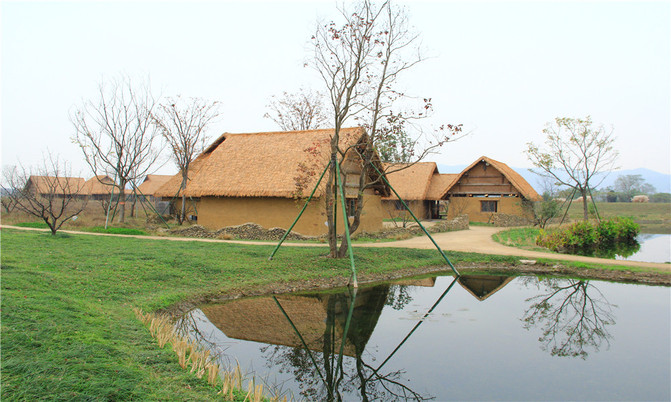
Before going to Hangzhou, I knew very little about it. I drove from Huzhou to Hangzhou for sightseeing and headed straight south. The beautiful scenery along the way by car, and the bits and pieces of West Lake intoxicated my heart. Started a trip to Hangzhou city.

This is the most suitable place for couples to travel, stroll together, and interpret the magnificent and dynamic landscape of nature. Appreciate the undulating peaks and lush forests, savor the delicious Hangzhou cuisine, and walk along the West Lake Road in Hangzhou at night, taking a panoramic view of the city's scenery.

[Main text]
1、 Origins of Hangzhou City
Although I have visited Hangzhou, Zhejiang several times before, the time for each trip was rushed, so I did not go to Hangzhou to take a closer look at the city. For several years, I have wanted my husband and wife to drive all over Jiangsu, Zhejiang, and Anhui in just one month. After August this year, I started a self driving exploration tour plan in Jiangsu, Zhejiang, and Anhui; In December, during the early winter season in Jiangnan, the couple walked south to see the winter Liangzhu in Hangzhou and the autumn scenery of Qiandao Lake. Breathe in the air of Hangzhou, taste Hangzhou cuisine, and set aside your passion.

2、 Departure preparation
There is no reason to worry, let's have a spontaneous trip. For the trip, make various preparations for departure, understand the weather conditions at the destination, and make a list of necessary items.

3、 Travel itinerary for self driving in Hangzhou, Zhejiang;
Day 1: Hangzhou Liangzhu National Archaeological Site Park
Day 2: Qiandao Lake in Chun'an, Hangzhou, and Fuchun River in Hangzhou
Day 3: Hangzhou Chinese Fan Museum, Hangzhou Chinese Umbrella Museum, Hangzhou Chinese Knife and Sword Museum, Hangzhou Arts and Crafts Museum, Hangzhou Chinese Tea Museum, Hangzhou Grand Canal Museum, Hangzhou Zhejiang Museum, Hangzhou Botanical Garden

Traffic information:
1、 Train number self driving [Huzhou City - Hangzhou City]
Departing from 07:00 in Huzhou City on December 16, 2020 to 09.00 in Hangzhou City on December 16, 2020, with a mileage of 90 kilometers and a 2-hour drive.

Regarding the author: I am a freelance travel enthusiast and also a photography enthusiast. My main focus is on taking landscape photos, and in my spare time, I enjoy traveling around and visiting various places to capture the stunning scenery and local customs. As someone who loves photography, I will never let go of all the beautiful people and things along the way. I believe that the moment of stillness will make up all my memories. If you want to learn more about my photography works and travelogues, you can follow my:
Ctrip Travel Notes: Leyapai Travel Guide
If you have any questions about traveling, feel free to leave me a message at any time

Memory:
The essence of self driving self-service tourism routes in Hangzhou:
When you look down in the moment, you realize the path under your feet. There are no wings left in the sky, but birds are flying
Day 1: Enjoy a trip to Hangzhou, Zhejiang
Hangzhou is known as a "paradise on earth" due to its beautiful scenery. There are numerous cultural relics, including a large number of natural and cultural landscape relics around West Lake. Among them, Beishan Street is one of the representative cultural relics of West Lake.

This Hangzhou city, which has been known as a "heaven on earth" since ancient times, has a complete range of mountains, springs, lakes, bridges, towers, and temples, and the colors in the scenery have gradually diversified over time.

In the bustling city, the modern atmosphere of Wulin Square and the ancient charm of Qinghefang are intertwined, giving people the most authentic and memorable Hangzhou.

Day 1: Hangzhou Liangzhu National Archaeological Site Park [Purchase Ticket]
The Liangzhu Site is located in Yuhang County and Deqing County, Zhejiang Province. It is a group of late Neolithic cultural sites, dating from 3300 BC to 2000 BC. It is the largest and highest level archaeological site in the origin stage of Chinese civilization, and also one of the most important archaeological sites in China.

The Liangzhu Site was discovered in 1936 and has been excavated intermittently ever since. Distributed in more than 50 locations centered around the Mojiaoshan site.

Various relics such as densely distributed villages, cemeteries, and altars have been discovered in the Liangzhu Culture Site Group. Among the unearthed artifacts, a large number of exquisite jade ritual vessels are the most distinctive.

The Liangzhu Culture Site Group has become one of the largest and most advanced regions in the 5000 year history of Chinese civilization.
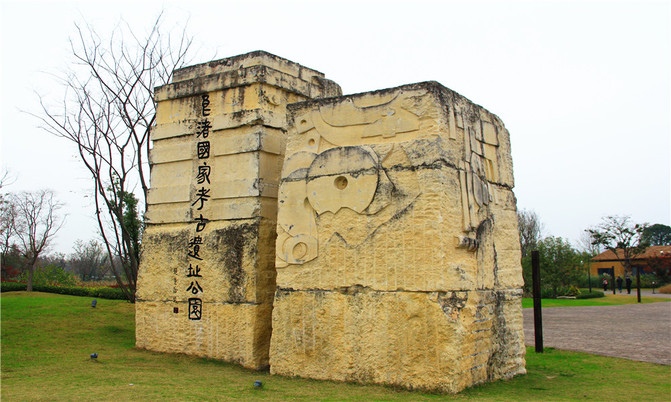
The Liangzhu Site is the place where the Liangzhu Culture was named, and its discovery has important academic value for studying the origin of civilization in the lower reaches of the Yangtze River.

The Liangzhu Site has once again revealed the past glory of an ancient country that has been shrouded in historical smoke and dust in the southeast corner of the sea.

It has been 70 years since Mr. Shi Xingeng, a researcher at the West Lake Museum, first discovered ancient cultural relics in Liangzhu Village, Yuhang Town in 1936. During these 70 years of research and excavation, Liangzhu has continuously provided exciting discoveries for Chinese archaeology. Given its grandeur, there are five achievements that stand out the most.

Liangzhu National Archaeological Site Park

Liangzhu National Archaeological Site Park

Liangzhu National Archaeological Site Park
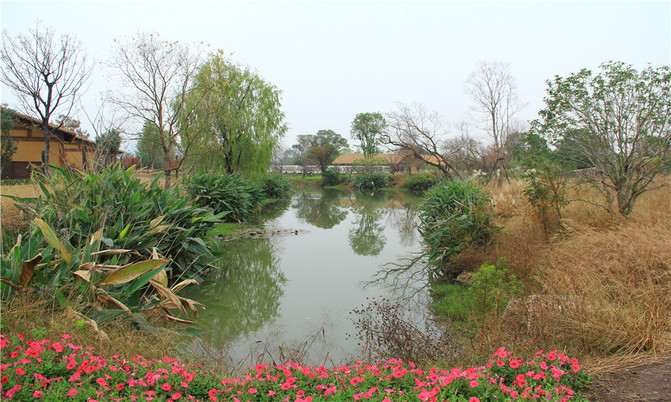
Liangzhu National Archaeological Site Park

Liangzhu National Archaeological Site Park

Liangzhu National Archaeological Site Park

Liangzhu National Archaeological Site Park

Liangzhu National Archaeological Site Park

Liangzhu National Archaeological Site Park

Liangzhu National Archaeological Site Park

Liangzhu National Archaeological Site Park

Liangzhu National Archaeological Site Park

Liangzhu National Archaeological Site Park

Liangzhu National Archaeological Site Park

Liangzhu National Archaeological Site Park

Liangzhu National Archaeological Site Park

Liangzhu National Archaeological Site Park

Liangzhu National Archaeological Site Park

Liangzhu National Archaeological Site Park

Liangzhu National Archaeological Site Park

Guide

Liangzhu National Archaeological Site Park

Guide

Shi Xingeng Sculpture [Discoverer of Liangzhu]

Liangzhu National Archaeological Site Park
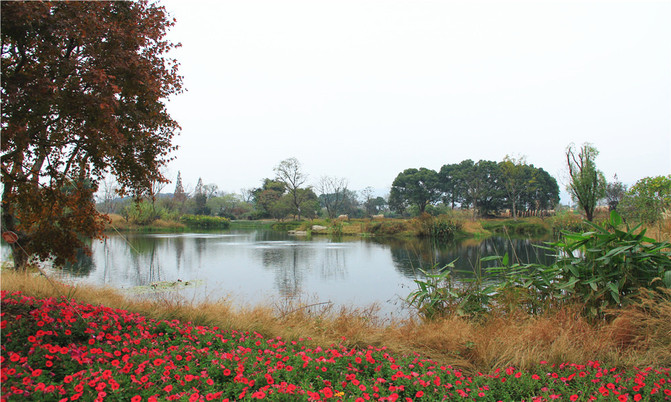
Liangzhu National Archaeological Site Park

Liangzhu National Archaeological Site Park

Liangzhu National Archaeological Site Park

Liangzhu National Archaeological Site Park

Scenic Area Sightseeing Bus [The scenic area is too large, it is recommended to take it]

Guide

Liangzhu National Archaeological Site Park

Guide

Guide

Liangzhu National Archaeological Site Park - Luchengmen Site

Liangzhu National Archaeological Site Park - Luchengmen Site
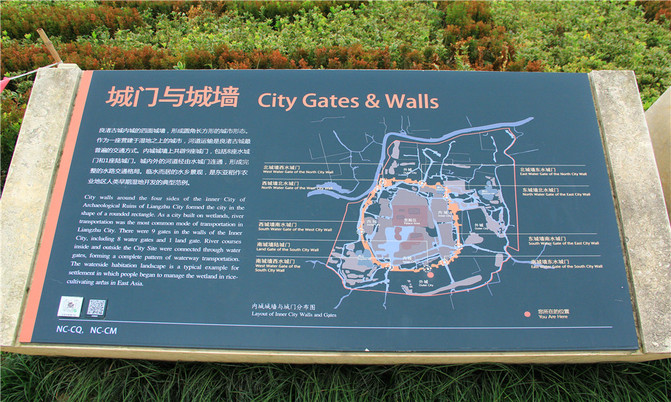
Guide

Liangzhu National Archaeological Site Park - Luchengmen City Wall Site

Liangzhu National Archaeological Site Park - Luchengmen City Wall Site

Liangzhu National Archaeological Site Park - Luchengmen City Wall Site

Liangzhu National Archaeological Site Park - Luchengmen City Wall Site

Liangzhu National Archaeological Site Park - Luchengmen City Wall Site

Liangzhu National Archaeological Site Park - Luchengmen Site

Liangzhu National Archaeological Site Park - Luchengmen Site

Liangzhu National Archaeological Site Park - Luchengmen Site

Liangzhu National Archaeological Site Park - Luchengmen Site

Liangzhu National Archaeological Site Park - Luchengmen Site

Guide

Scenic Area Rendering

Scenic Area Rendering

Liangzhu National Archaeological Site Park

Liangzhu National Archaeological Site Park

Liangzhu National Archaeological Site Park

Liangzhu National Archaeological Site Park

Liangzhu National Archaeological Site Park

Guide

Ruins of Southern City Brick Wall

Ruins of Southern City Brick Wall

Ruins of Southern City Brick Wall

Ruins of Southern City Brick Wall

Liangzhu National Archaeological Site Park

Liangzhu National Archaeological Site Park

Liangzhu National Archaeological Site Park

Liangzhu National Archaeological Site Park

Liangzhu National Archaeological Site Park

South City Wall of Liangzhu National Archaeological Site Park

South City Wall of Liangzhu National Archaeological Site Park

South City Wall of Liangzhu National Archaeological Site Park

South City Wall of Liangzhu National Archaeological Site Park

South City Wall of Liangzhu National Archaeological Site Park

South City Wall of Liangzhu National Archaeological Site Park

Liangzhu National Archaeological Site Park - South City Wall Site

Liangzhu National Archaeological Site Park - South City Wall Site

Liangzhu National Archaeological Site Park - South City Wall Site

Liangzhu National Archaeological Site Park - South City Wall Site

Liangzhu National Archaeological Site Park - South City Wall Site

Liangzhu National Archaeological Site Park - South City Wall Site

Liangzhu National Archaeological Site Park - South City Wall Site

Liangzhu National Archaeological Site Park - South City Wall Site

Liangzhu National Archaeological Site Park - South City Wall Site

Liangzhu National Archaeological Site Park

Liangzhu National Archaeological Site Park

Liangzhu National Archaeological Site Park

Liangzhu National Archaeological Site Park

Guide

Liangzhu National Archaeological Site Park

Liangzhu National Archaeological Site Park

Liangzhu National Archaeological Site Park

Guide

Liangzhu National Archaeological Site Park

Liangzhu National Archaeological Site Park

Liangzhu National Archaeological Site Park

Liangzhu National Archaeological Site Park

Guide

Liangzhu National Archaeological Site Park

Liangzhu National Archaeological Site Park

Liangzhu National Archaeological Site Park

Liangzhu National Archaeological Site Park

Liangzhu National Archaeological Site Park

Liangzhu National Archaeological Site Park

Liangzhu National Archaeological Site Park

Liangzhu National Archaeological Site Park

Liangzhu National Archaeological Site Park

Liangzhu National Archaeological Site Park

Liangzhu National Archaeological Site Park

Liangzhu National Archaeological Site Park

Liangzhu National Archaeological Site Park

Liangzhu National Archaeological Site Park

Liangzhu National Archaeological Site Park

Liangzhu National Archaeological Site Park

Liangzhu National Archaeological Site Park

Liangzhu National Archaeological Site Park

Liangzhu National Archaeological Site Park

Day 2: Qiandao Lake in Chun'an, Hangzhou
Qiandao Lake, located in Chun'an County, Hangzhou City, Zhejiang Province, is an artificial lake built to retain the lower reaches of the Xin'an River for the construction of the Xin'an River hydropower station.

Qiandao Lake was built in 1955 and completed in 1960. The reservoir is approximately 150 kilometers long, with a maximum width of over 10 kilometers and a maximum depth of over 100 meters, with an average depth of 30.44 meters.

Under normal water levels, Qiandao Lake has an area of approximately 580 square kilometers and a storage capacity of 17.8 billion cubic meters. At its highest water level, it has 1078 land bridge islands larger than 0.25 square kilometers, mainly consisting of small islands below 2 square kilometers, with a total island area of 409 square kilometers.
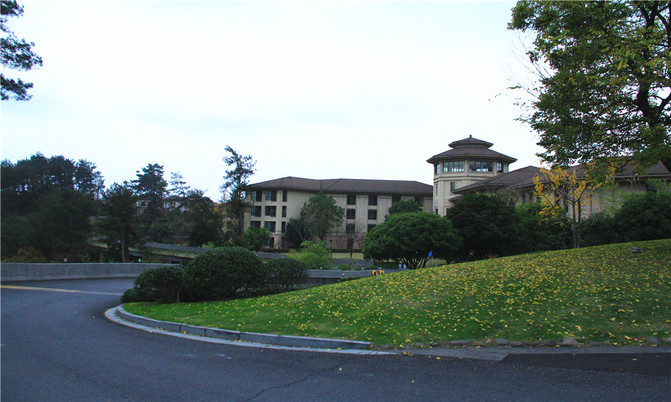
The water of Qiandao Lake ranks first among the high-quality rivers and lakes in China, and is a national first-class water body that meets drinking water standards without any treatment. It is known as the "Number One Beautiful Water in the World".

On December 15, 1984, the Zhejiang Provincial Place Names Committee officially named the Xin'anjiang Reservoir "Qiandao Lake".

In 2001, Qiandao Lake Scenic Area was rated as one of the first national AAAAA level tourist attractions.

On April 18, 2010, the National Tourism Administration awarded the Qiandao Lake Scenic Area the honor of being a national 5A level tourist attraction.

Stay at Hangzhou Qiandao Lake Runhe Jianguo Resort Hotel

The weather is not ideal and there is fog in the lake. I have decided not to board a boat for sightseeing at the last minute. Instead, I will take a self driving tour around the lake and walk wherever I go.

Rationalization suggestion: It is best to have a 2-day tour around Qiandao Lake, where you can visit various scenic spots and villages, and stay at a farmhouse in the evening.

The tour around Qiandao Lake is free of charge for all attractions and parking, and the cost is very low.

Due to time constraints, the tour around Qiandao Lake was just a superficial observation.

The charm of the tour around Qiandao Lake still lingers

Qiandao Lake Beiou Station

Qiandao Lake Beiou Station

Qiandao Lake Beiou Station

Qiandao Lake Beiou Station

Scenery of Qiandao Lake Beiou Station

Scenery of Qiandao Lake Beiou Station

Scenery of Qiandao Lake Beiou Station

Scenery of Qiandao Lake Beiou Station

Scenery of Qiandao Lake Beiou Station
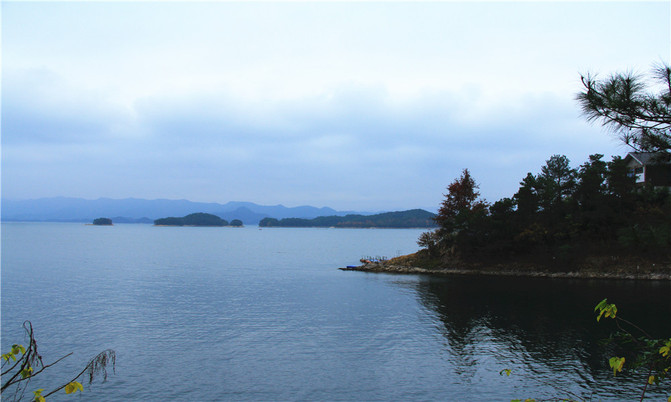
Scenery of Qiandao Lake Beiou Station

Scenery of Qiandao Lake Beiou Station

Scenery of Qiandao Lake Beiou Station

Scenery of Qiandao Lake Beiou Station

Scenery of Qiandao Lake Beiou Station

Scenery of Qiandao Lake Beiou Station

Scenery of Qiandao Lake Beiou Station

Scenery of Qiandao Lake Beiou Station

Scenery of Qiandao Lake Beiou Station

Qiandao Lake Qiyue Resort

Qiandao Lake Sabana Style
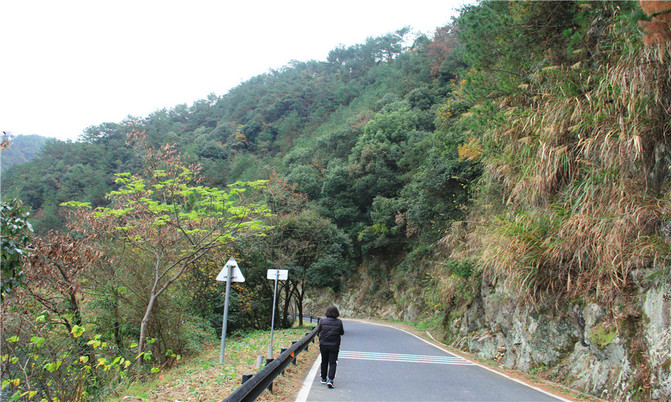
Qiandao Lake Qiyue Resort's Style

Qiandao Lake Qiyue Resort's Style

Qiandao Lake Qiyue Resort's Style

Qiandao Lake Qiyue Resort's Style

Qiandao Lake Qiyue Resort's Style

Qiandao Lake Qiyue Resort's Style

The charm of Qiandao Lake

The charm of Qiandao Lake

The charm of Qiandao Lake

The charm of Qiandao Lake

The charm of Qiandao Lake
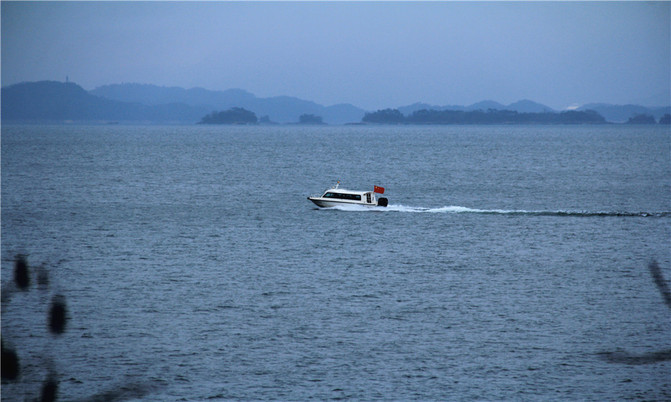
The charm of Qiandao Lake

The charm of Qiandao Lake

The charm of Qiandao Lake

The charm of Qiandao Lake

The charm of Qiandao Lake

The charm of Qiandao Lake

Qiandao Lake Bicycle Greenway

Qiandao Lake Bicycle Greenway

Qiandao Lake Bicycle Greenway

Qiandao Lake Bicycle Greenway

Qiandao Lake Bicycle Greenway

Qiandao Lake Bicycle Greenway

Qiandao Lake Bicycle Greenway

Qiandao Lake Bicycle Greenway
Qiandao Lake Bicycle Greenway
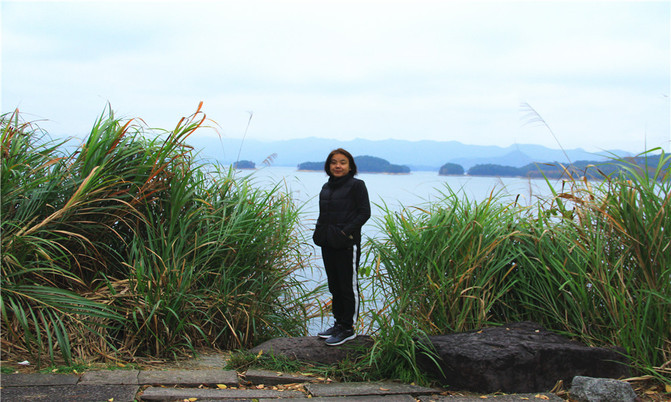
Qiandao Lake Bicycle Greenway

Qiandao Lake Bicycle Greenway

Qiandao Lake Bicycle Greenway

Qiandao Lake Bicycle Greenway

Qiandao Lake Santan Tunnel

Qiandao Lake Santan Tunnel

The oranges from Qiandao Lake are ripe

Qiandao Lake Surrounding Parking Lot [Free]

Qiandao Lake Surrounding Parking Lot [Free]

Spiritual Oasis Qiandao Lake

Spiritual Oasis Qiandao Lake

Spiritual Oasis Qiandao Lake

Spiritual Oasis Qiandao Lake

Spiritual Oasis Qiandao Lake

Spiritual Oasis Qiandao Lake

Spiritual Oasis Qiandao Lake
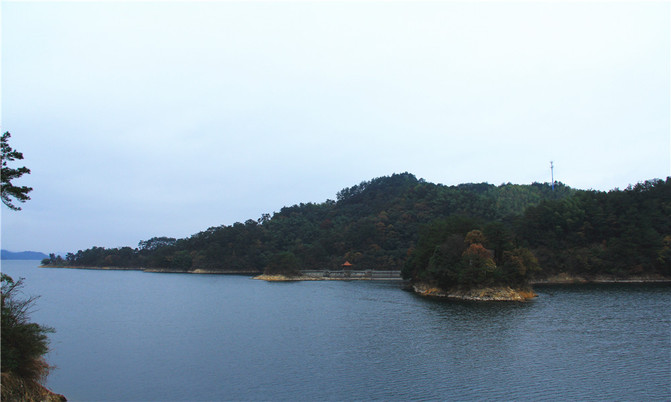
Spiritual Oasis Qiandao Lake

Spiritual Oasis Qiandao Lake

Spiritual Oasis Qiandao Lake

Spiritual Oasis Qiandao Lake

Spiritual Oasis Qiandao Lake

Spiritual Oasis Qiandao Lake

Spiritual Oasis Qiandao Lake

Spiritual Oasis Qiandao Lake

Spiritual Oasis Qiandao Lake

Spiritual Oasis Qiandao Lake

Spiritual Oasis Qiandao Lake

Spiritual Oasis Qiandao Lake

Spiritual Oasis Qiandao Lake

Spiritual Oasis Qiandao Lake

Spiritual Oasis Qiandao Lake

Day 2: Fuchun River in Hangzhou
Fuchun River is another name for the section of the Qiantang River from Meicheng Town in Jiande City to Wenjiayan in Xiaoshan District. It is 110 kilometers long and flows through two counties and cities in Zhejiang Province, Tonglu and Fuyang. The section from 5 kilometers below Meicheng to the vicinity of Luzbu is a canyon.

The mountains on both sides of the Fuchun River are clear and beautiful, and the river water is clear and clear, known for its beautiful water color. It also incorporates many villages and towns with strong local characteristics, adding color and radiance to the painting of the Fuchun River and Xin'an River.

The area around the Fuchun River was once known as the "Little Three Gorges", with "the world's beautiful mountains and rivers, ancient and modern times promoting Fuchun". At the confluence of the tributary Xuxi, there are historical sites such as "Zixu Ferry" and "Wuzixu Biemiao".

The charm of the banks of the Fuchun River

The charm of the banks of the Fuchun River

The charm of the banks of the Fuchun River

The charm of the banks of the Fuchun River

The charm of the banks of the Fuchun River

The charm of the banks of the Fuchun River

The charm of the banks of the Fuchun River

The charm of the banks of the Fuchun River

Day 3: Hangzhou China Fan Museum [Free Admission]
The China Fan Museum is one of three national level thematic museums funded and constructed by the Hangzhou Municipal Government (China Knife and Sword Museum, China Umbrella Museum, and China Fan Museum).
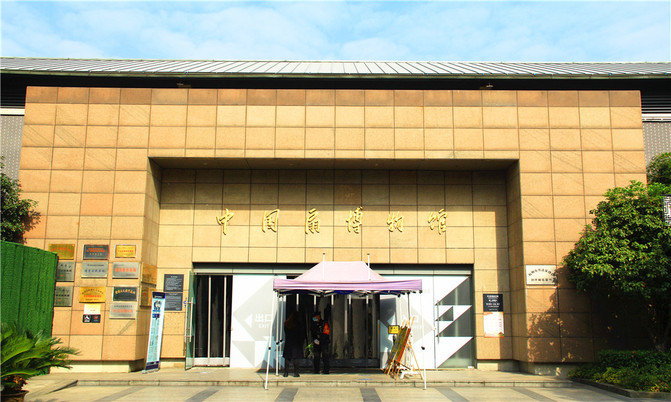
The Fan Museum is located in the Gongchen Bridge West Historical and Cultural District of Hangzhou City, Zhejiang Province. It is adjacent to Guihua Xiaohe Road to the west, Qiaoxi Zhijie to the east, Tongyuan Li to the south, and Tonghe Li to the north.

The functional positioning of the Fan Museum is mainly to promote and promote China's long-standing fan skills, explore and protect traditional handicrafts, while also considering display and collection.

The Fan Museum showcases the characteristics of Hangzhou and the characteristics of the Grand Canal, and strives to build it into a "leading domestic and world-class" national level thematic museum.

China Fan Museum
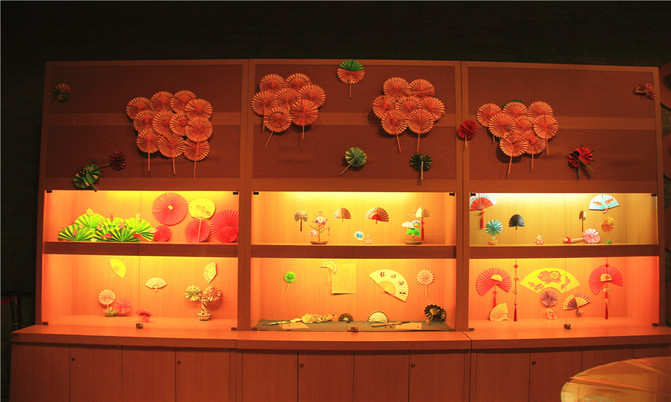
China Fan Museum

Guide

China Fan Museum

China Fan Museum

China Fan Museum

China Fan Museum

China Fan Museum

China Fan Museum

China Fan Museum

China Fan Museum

China Fan Museum

China Fan Museum

China Fan Museum

China Fan Museum

China Fan Museum

China Fan Museum

China Fan Museum

China Fan Museum

China Fan Museum

China Fan Museum

China Fan Museum

China Fan Museum

China Fan Museum

China Fan Museum

China Fan Museum

China Fan Museum

China Fan Museum

China Fan Museum
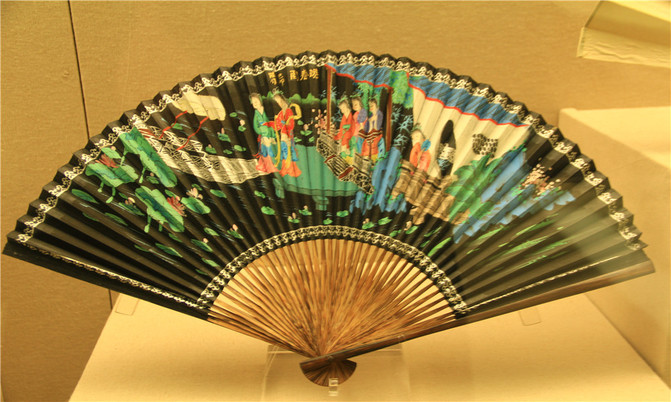
China Fan Museum

China Fan Museum

China Fan Museum

Day 3: Hangzhou Chinese Umbrella Museum
The Chinese Umbrella Museum is located in Hangzhou, Zhejiang Province. The misty rain in Jiangnan has given rise to a unique umbrella culture, with the aesthetic, poetic, and symbolic significance of umbrellas accompanying the wheels of historical development, crushing a unique cultural trajectory.

Umbrellas are beautiful due to rain, and the Chinese Umbrella Museum is inseparable from the rain. The museum features virtual rain scenes, small mist, and other multimedia performances as renderings. The entire venue is dominated by white walls and gray tiles, evoking memories of the long and lonely rain alleyway depicted by Dai Wangshu, where the girl, holding an oil paper umbrella, wandered alone.

China Umbrella Museum

China Umbrella Museum

China Umbrella Museum

China Umbrella Museum

The girl wandering alone with an oil paper umbrella in the long and lonely rainy alley.

The Origin of Chinese Umbrellas

The Origin of Chinese Umbrellas

The Origin of Chinese Umbrellas

The Origin of Chinese Umbrellas
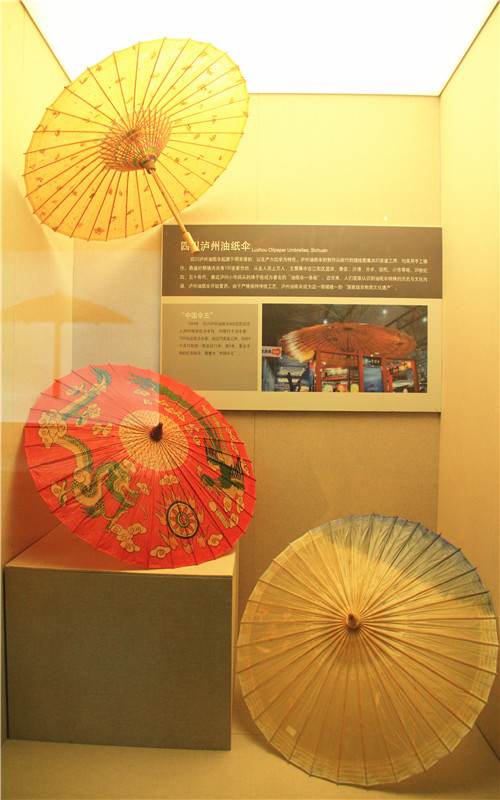
The Origin of Chinese Umbrellas

The Origin of Chinese Umbrellas

The Origin of Chinese Umbrellas

The handicraft exhibition hall, as a whole, has formed a museum community full of rich historical and cultural heritage, becoming a new cultural landscape in the north of Hangzhou city. Strolling through museums is a journey of seeking knowledge, with memories flowing through the canal and nostalgia.

The Origin of Chinese Umbrellas

The Origin of Chinese Umbrellas

The Origin of Chinese Umbrellas

The Origin of Chinese Umbrellas

Beautiful West Lake Silk Umbrella

Beautiful West Lake Silk Umbrella

Beautiful West Lake Silk Umbrella

Beautiful West Lake Silk Umbrella
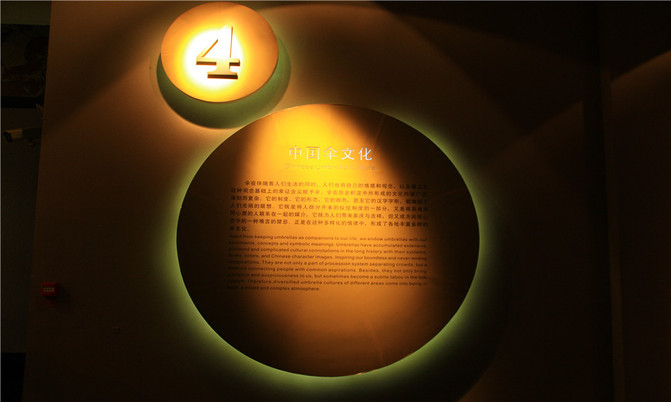
Chinese Umbrella Culture
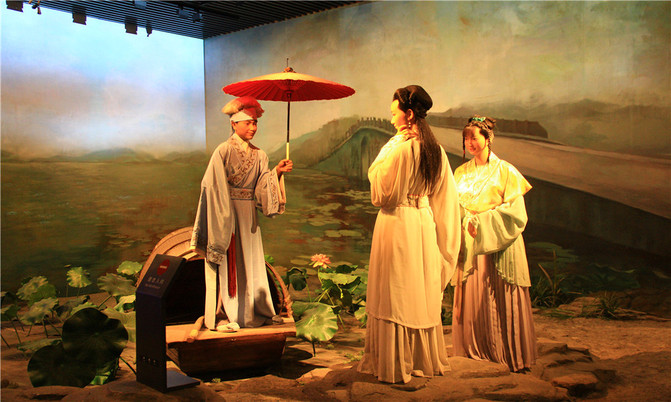
The Umbrella Story of the White Snake

Emperor's travel umbrella

Royal Umbrella

Chinese Umbrella Culture

Chinese Umbrella Culture

Chinese Umbrella Culture

Chinese Umbrella Culture

Chinese Umbrella Culture

Chinese Umbrella Culture

Chinese Umbrella Culture

Chinese Umbrella Culture

Chinese Umbrella Culture

Umbrella repair

Umbrella repair

Day 3: Hangzhou China Knife and Sword Museum [Free Admission]
The positioning of the China Knife and Sword Museum is mainly to promote and promote the long-standing skills of cutting, umbrella, and fan in China, explore and protect traditional handicrafts, while also considering display and collection.

Knives and swords, belonging to the material culture of human civilization, are inventions created by humans to better adapt to nature, increase behavioral abilities, and improve quality of life.

China Knife and Sword Museum

China Knife and Sword Museum

China Knife and Sword Museum

China Knife and Sword Museum

Day 3: Hangzhou China Tea Museum [Free Admission]
The China Tea Museum is located at No. 88 Longjing Road, Shuangfeng Village, Nangao Peak, Longjing Village, Xihu Tea Township, covering an area of approximately 3.7 hectares. It is a national level museum with the theme of tea and tea culture.

The main body of the Tea Museum is composed of several well-arranged buildings, surrounded by tea gardens, connected by flower corridors, winding paths, rockeries, ponds, water pavilions, etc. It is rich in the unique charm of Jiangnan gardens and the simple and fresh rural scenery that returns to nature.

Hangzhou China Tea Museum

Hangzhou China Tea Museum

Hangzhou China Tea Museum
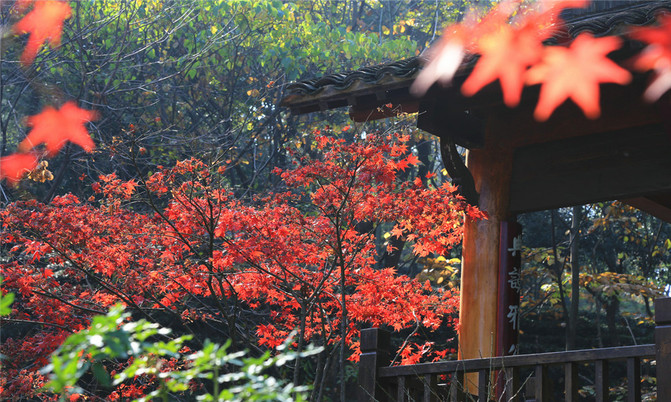
Hangzhou China Tea Museum

Hangzhou China Tea Museum

Hangzhou China Tea Museum

Hangzhou China Tea Museum

Hangzhou China Tea Museum

Hangzhou China Tea Museum

Hangzhou China Tea Museum

Hangzhou China Tea Museum

Hangzhou China Tea Museum

Hangzhou China Tea Museum

Hangzhou China Tea Museum

Hangzhou China Tea Museum

Day 3: Hangzhou Grand Canal Museum [Free Admission]
The China Grand Canal Museum is located on the south side of the Canal Culture Square in Gongshu District, Hangzhou, adjacent to the southern endpoint of the Grand Canal - Gongchen Bridge.

The Beijing Hangzhou Grand Canal Museum is divided into four exhibition halls: "The Excavation and Transformation of the Grand Canal", "The Utilization of the Grand Canal", "Cities Along the Canal", and "Canal Culture".

The Beijing Hangzhou Grand Canal Museum currently collects and exhibits thousands of cultural relics and historical materials, fully showcasing the position and role of the Grand Canal in the development history of the Chinese nation.

It officially opened on October 1st, 2006. Former leader of the Communist Party of China, Qiao Shi, inscribed the name of the museum.

Hangzhou Grand Canal Museum

The Grand Canal was originally excavated for military purposes. King Fuchai of Wu wanted to go north to compete for supremacy, so he dug a Han ditch to transport people, horses, and food. But after the Sui and Tang dynasties, the functions of the Grand Canal were more reflected in the economic aspect.

Hangzhou Grand Canal Museum

Hangzhou Grand Canal Museum

Hangzhou Grand Canal Museum

Hangzhou Grand Canal Museum

Hangzhou Grand Canal Museum

Hangzhou Grand Canal Museum

Hangzhou Grand Canal Museum

Hangzhou Grand Canal Museum

Hangzhou Grand Canal Museum

Hangzhou Grand Canal Museum

Hangzhou Grand Canal Museum

Hangzhou Grand Canal Museum

Hangzhou Grand Canal Museum

Hangzhou Grand Canal Museum

Hangzhou Grand Canal Museum

Hangzhou Grand Canal Museum

Day 3: Hangzhou Zhejiang Museum [Free Admission]
The Zhejiang Provincial Museum is located in Xihu District, Hangzhou City, Zhejiang Province. It was founded in 1929 and was originally named the "Zhejiang Provincial West Lake Museum". It is the largest comprehensive humanities museum in Zhejiang Province that integrates collection, exhibition, and research, with a collection of over 100000 cultural relics.

In 1993, the renovation and expansion project of the Zhejiang Provincial Museum was completed. The new museum covers an area of 20400 square meters, with a building area of 7360 square meters. Ten new exhibition halls were added, including the Historical Relics Museum, Celadon Museum, Calligraphy and Painting Museum, Coin Museum, Lv Xiaguang Art Museum, Chang Shuhong Art Museum, and Ming and Qing Furniture Museum.

The building of Zhejiang Museum is composed of individual buildings and corridors that are rich in the regional characteristics of Jiangnan, forming a unique pattern of "garden within the museum, garden within the museum".

Hangzhou Zhejiang Museum

Hangzhou Zhejiang Museum

The Zhejiang Provincial Museum is a national first-class museum.

Hangzhou Zhejiang Museum

Hangzhou Zhejiang Museum

Hangzhou Zhejiang Museum

Hangzhou Zhejiang Museum
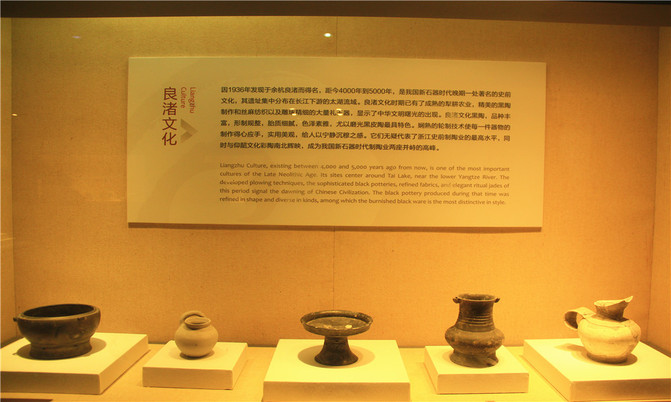
Liangzhu Culture

Hangzhou Zhejiang Museum

Hangzhou Zhejiang Museum

Hangzhou Zhejiang Museum

Hangzhou Zhejiang Museum

Hangzhou Zhejiang Museum

Hangzhou Zhejiang Museum
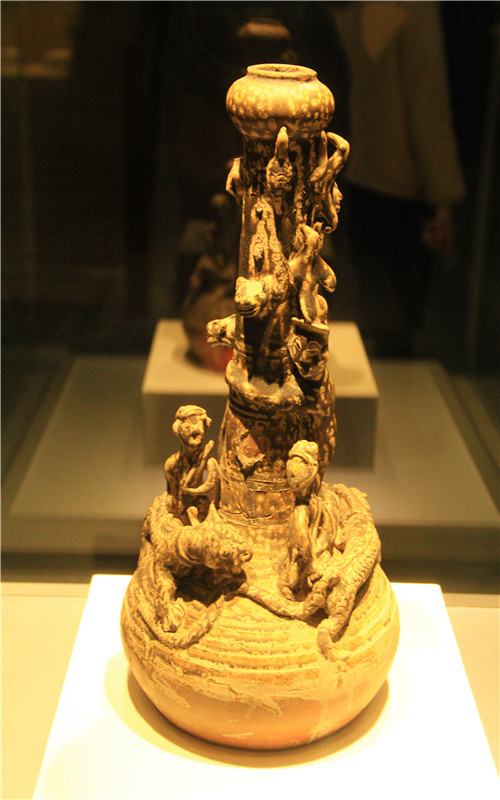
Hangzhou Zhejiang Museum

Hangzhou Zhejiang Museum

Hangzhou Zhejiang Museum

Hangzhou Zhejiang Museum

Hangzhou Zhejiang Museum

Hangzhou Zhejiang Museum

Hangzhou Zhejiang Museum
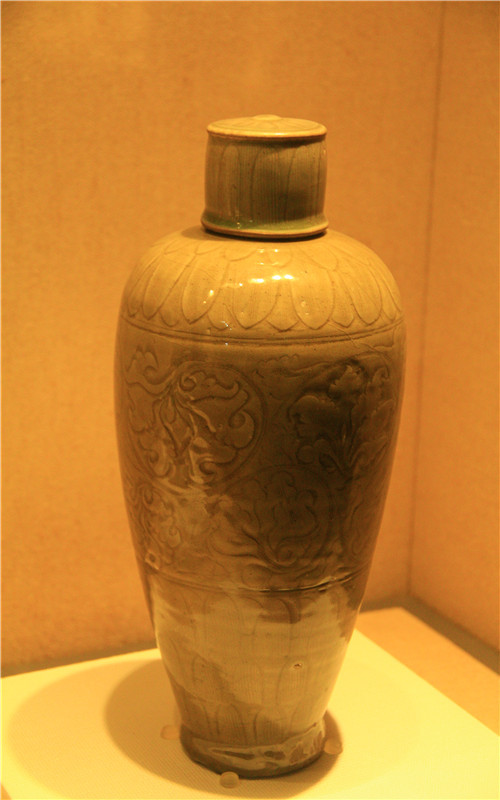
Hangzhou Zhejiang Museum

Hangzhou Zhejiang Museum

Hangzhou Zhejiang Museum

Hangzhou Zhejiang Museum

Hangzhou Zhejiang Museum

Hangzhou Zhejiang Museum

Hangzhou Zhejiang Museum

Hangzhou Zhejiang Museum

Hangzhou Zhejiang Museum
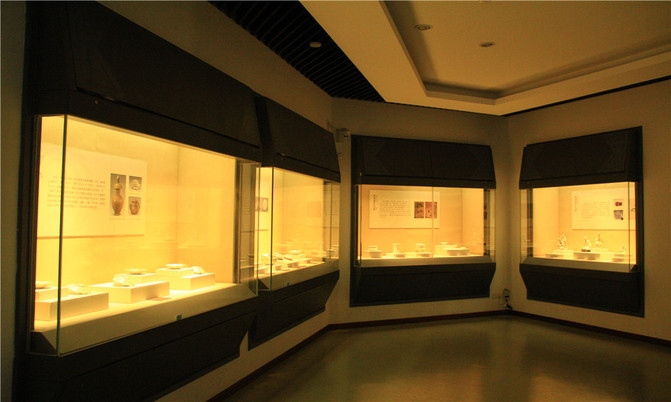
Hangzhou Zhejiang Museum

Hangzhou Zhejiang Museum

Hangzhou Zhejiang Museum

Hangzhou Zhejiang Museum

Hangzhou Zhejiang Museum

Hangzhou Zhejiang Museum

Hangzhou Zhejiang Museum

Hangzhou Zhejiang Museum
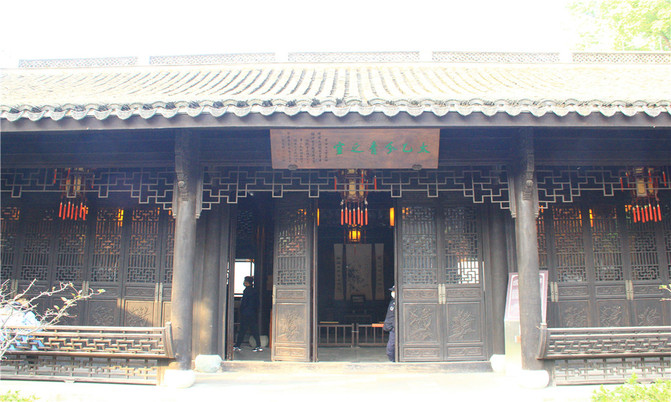
Hangzhou Zhejiang Museum

Hangzhou Zhejiang Museum

Hangzhou Zhejiang Museum

Hangzhou Zhejiang Museum

Hangzhou Zhejiang Museum

Hangzhou Zhejiang Museum

Hangzhou Zhejiang Museum

Hangzhou Zhejiang Museum

Hangzhou Zhejiang Museum

Hangzhou Zhejiang Museum

Hangzhou Zhejiang Museum

Day 3: Hangzhou Botanical Garden [Free Admission]
The Hangzhou Botanical Garden is located in Taoyuanling, Xihu District, Hangzhou City. It was established in 1956 and is one of the scientific research institutions for plant introduction and domestication in China. It has nine exhibition areas and four experimental areas, including plant classification, economic plants, bamboo plants, ornamental plants, trees, and landscape architecture.

The botanical garden has become a truly green treasure trove by the West Lake, winning praise from peers both domestically and internationally.

Experts from the Indonesian Bogor Botanical Garden once praised Hangzhou Botanical Garden as one of the largest and most beautiful botanical gardens in Asia.

As early as the 1950s and 1960s, Mao Zedong, Zhu De, and Liu Shaoqi personally visited the botanical garden for inspection. Afterwards, central leaders such as Deng Xiaoping, Chen Yun, Ye Jianying, Wang Zhen, Hu Yaobang, Wan Li, Chen Muhua, and Zhu Rongji also visited the botanical garden one after another.

Hangzhou Botanical Garden

Hangzhou Botanical Garden

Hangzhou Botanical Garden

Hangzhou Botanical Garden

Hangzhou Botanical Garden

Hangzhou Botanical Garden

Hangzhou Botanical Garden

Hangzhou Botanical Garden

Hangzhou Botanical Garden

Hangzhou Botanical Garden

Hangzhou Botanical Garden

Hangzhou cuisine:

West Lake Water Shield Vegetable

Fried cypress

Fried Taiwanese Meatballs

Flavored beef tenderloin

Roll Cold Chicken Cooked in Wine
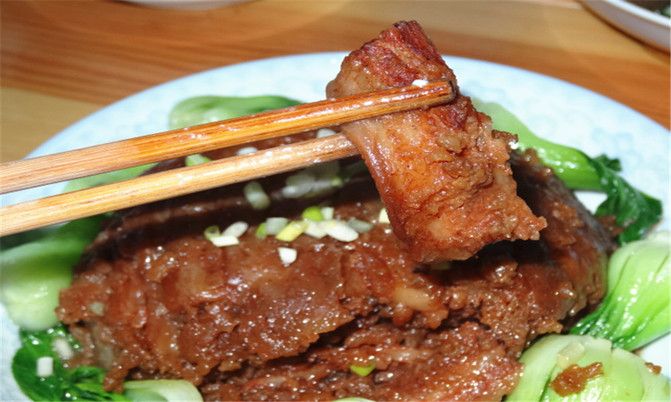
Hangzhou Steamed Pork with Rice Flour in Lotus Leaf with Lotus Leaf Vermicelli

Wang Xiao Shandong Slope Pork

Xiaoshan Babao Tofu

Qianjiang Shredded Pork

Nanru Braised Pork and Dried Bamboo Shoots

Mingliang Fried Bun

Fish Ball in Light Soup in Clear Soup

Song Sao's Fish Soup

Traveling may not necessarily cost much money, but not traveling may not save much money, nor may one become wealthy. In life, there are not many moments that truly belong to oneself. Living according to one's heart is the best way to live. Taking advantage of the sunshine and gentle breeze, go see the people you want to see and the scenery you want to see. This is the beautiful life

Along the way, the mountains and rivers are connected and undulating. The winding and winding road on the mountainside winds around the green mountains like strands of ribbons, creating a unique and beautiful scenery. The hazy distant mountains are shrouded in a layer of light gauze, with a vague and indistinct image, moving in and out of the misty clouds. Seeing this scene, one can only sigh: "This scene should only exist in the sky, and the world can hear it a few times."

Traveling feeling: I was a person who loved to walk around. I walked through countless mountains, rivers, Rivers and Lakes, from the southern paradise Suzhou and Hangzhou, to Harbin Ice City in the north, to the northernmost desert in China, from the south of colored clouds in the west, to the Yellow Sea and the Bohai Sea in the east, to Putuo who had visited the East China Sea in the east, and continued to travel south to Hainan, from the Central Plains to Sichuan and Lhasa in the southwest, and from Gansu and Shaanxi to Xinjiang in the northwest. I will look for highlights of my journey in this place of love and longing, and carefully record my love for a place, most of which is for someone or something With your experience and beautiful scenery, please visit Hangzhou, Zhejiang Province.

That year, driving a trip to Jiangsu, Zhejiang, and Anhui; End of the seventh chapter of the self driving exploration journey in Hangzhou, Zhejiang Province. Please continue to browse the eighth chapter of the self driving exploration journey in Jiangshan, Zhejiang Province that year
Previous Article:Seeking seclusion towards Jingshan and asking about Tea Land and Yuquan - Encountering a Jiangnan Garden Party in Autumn
Next Article:Can you forget Jiangnan? -2019 East China Tour
